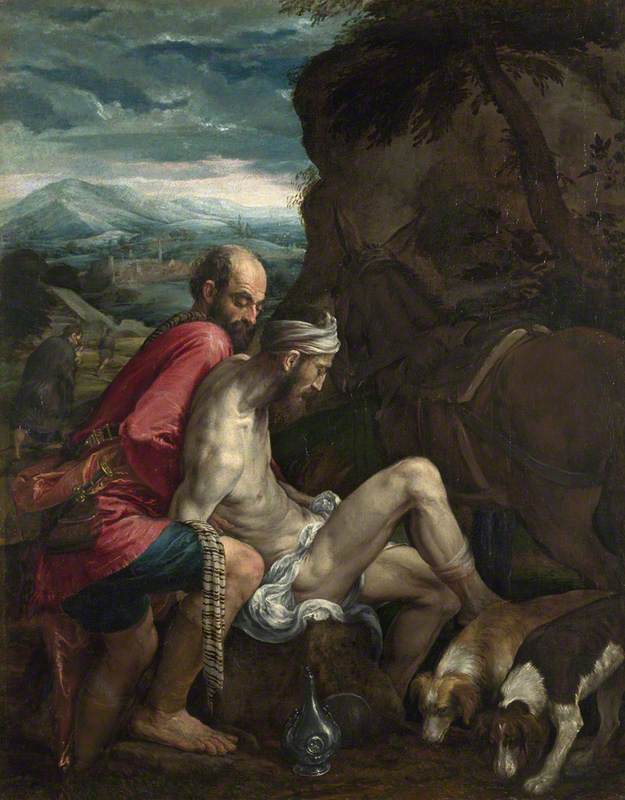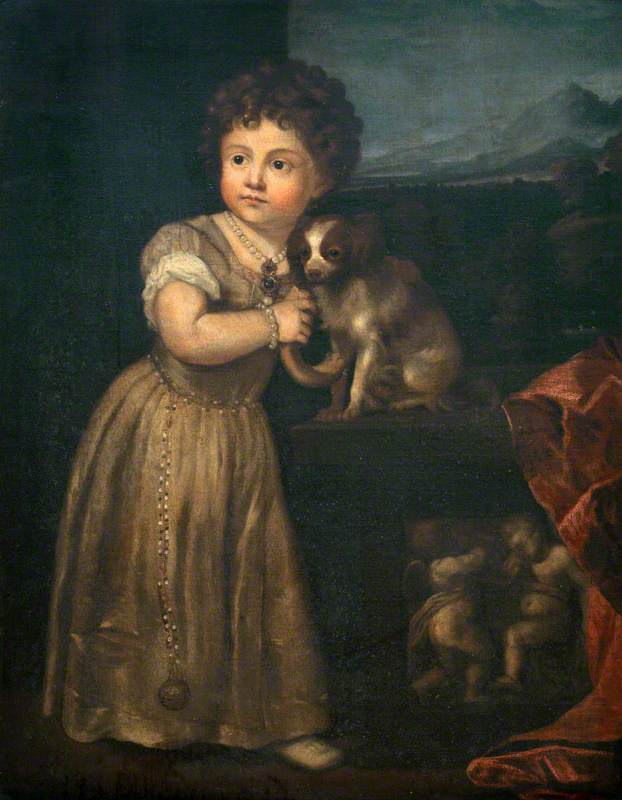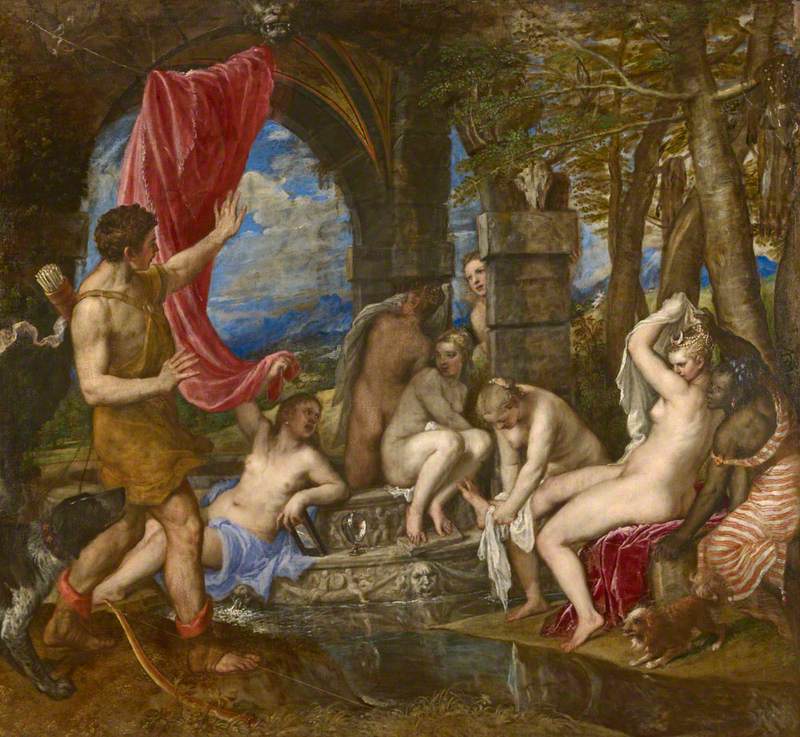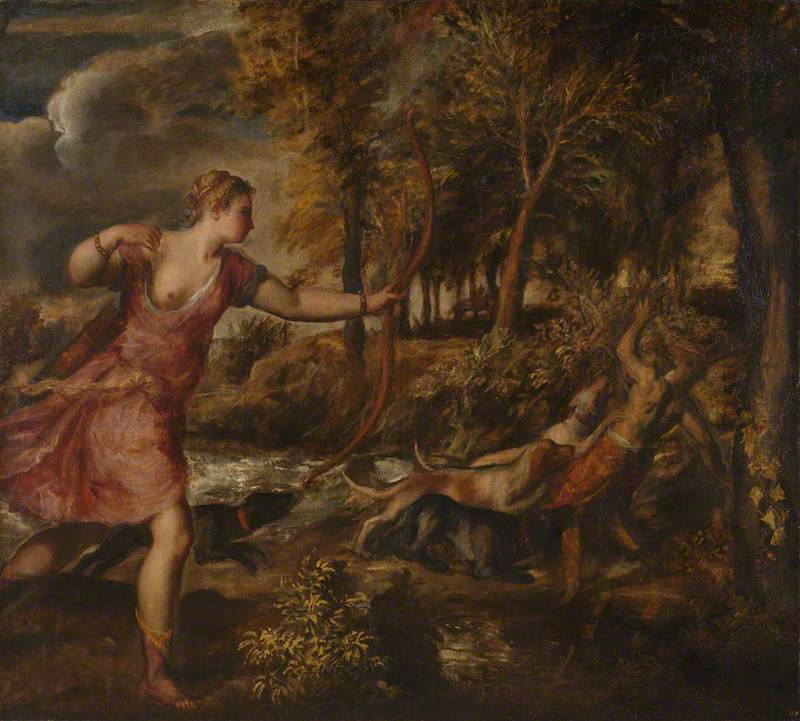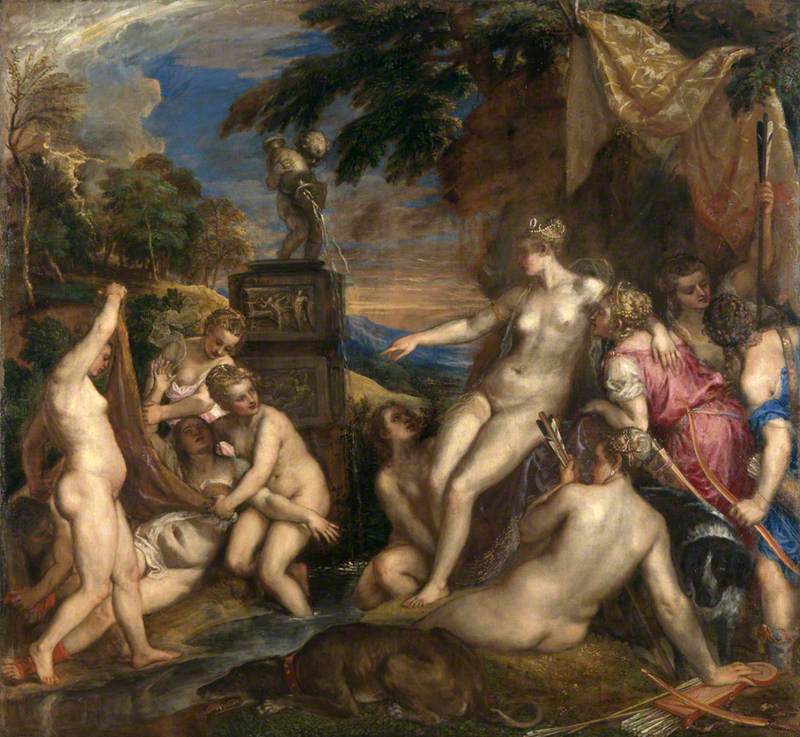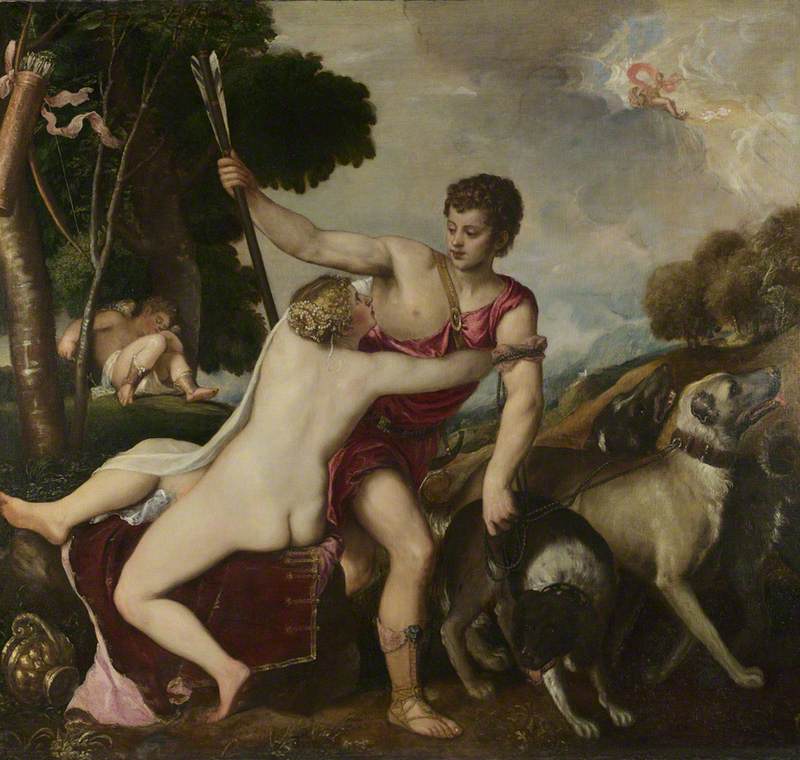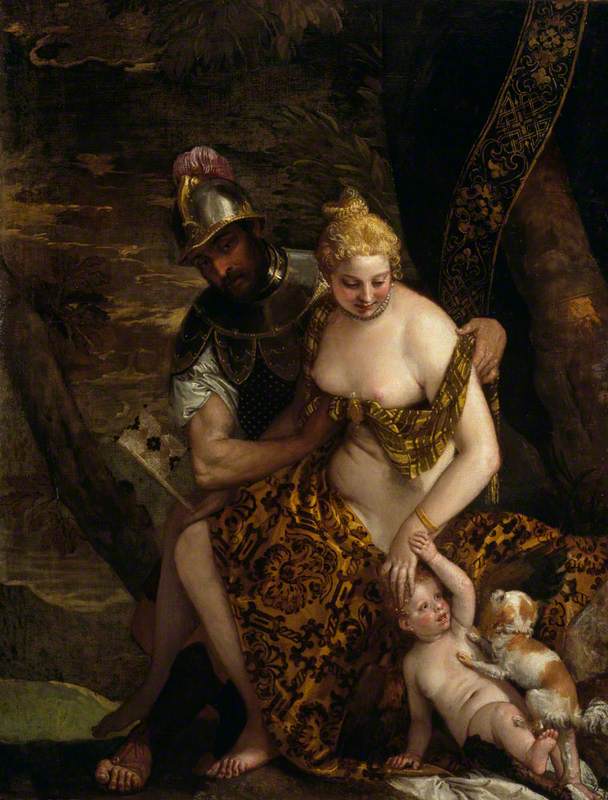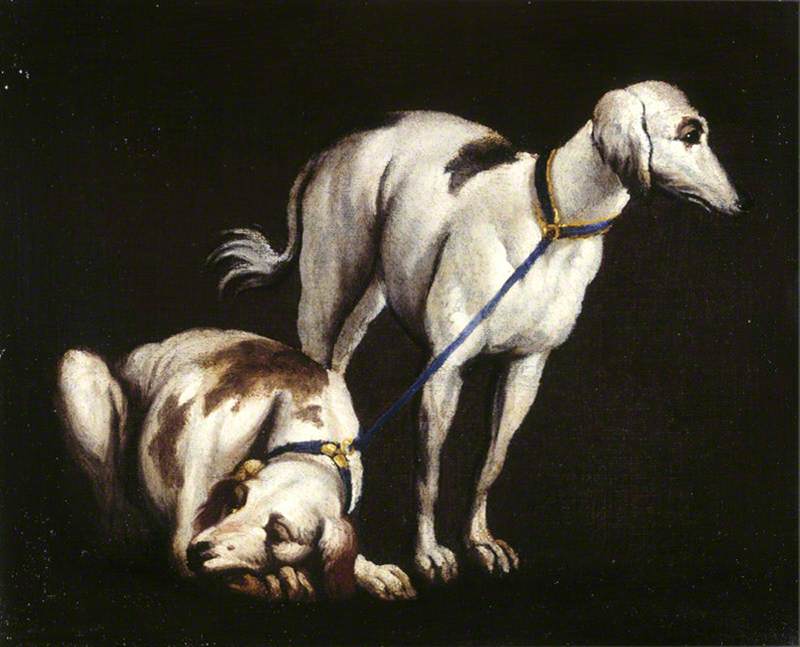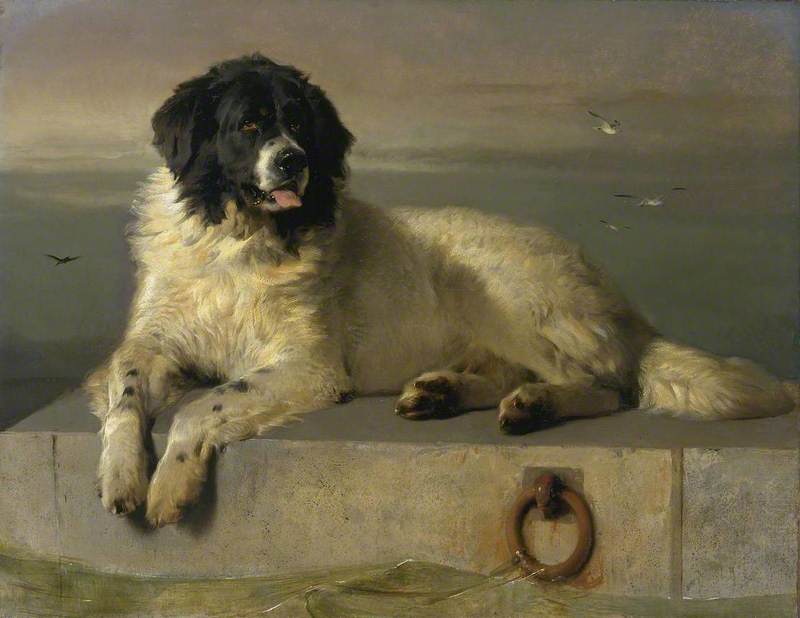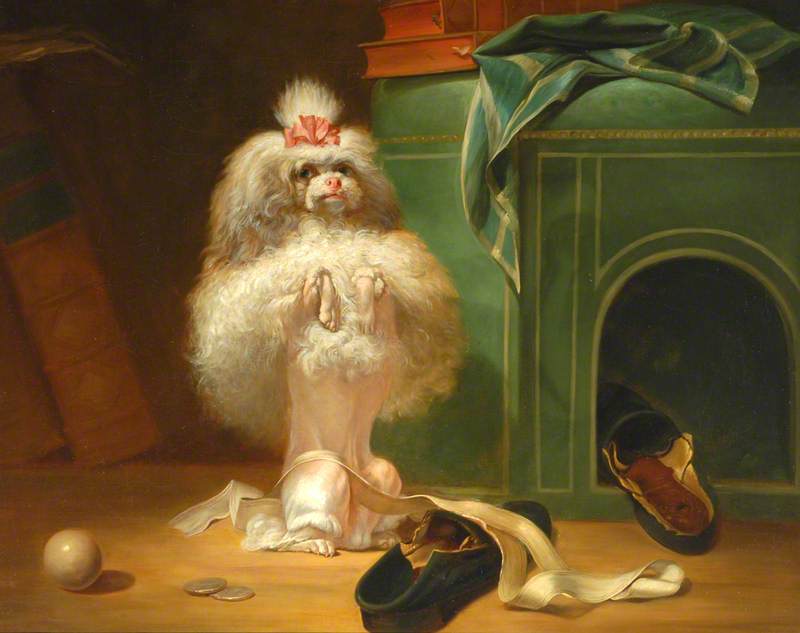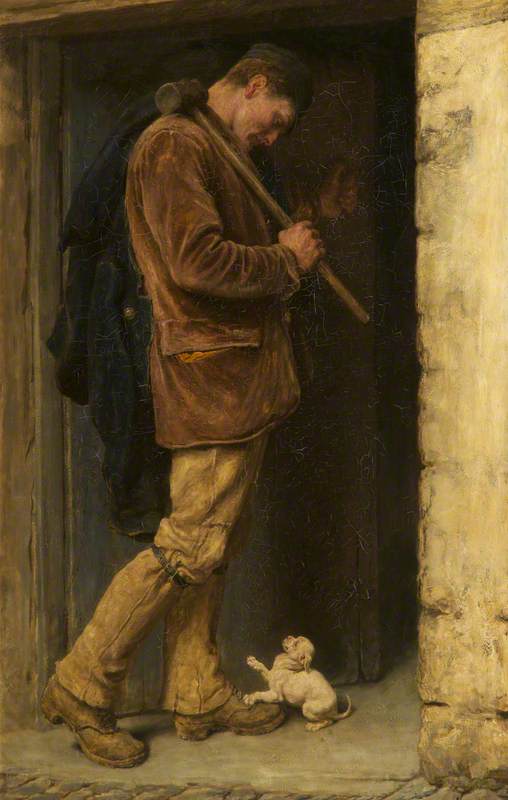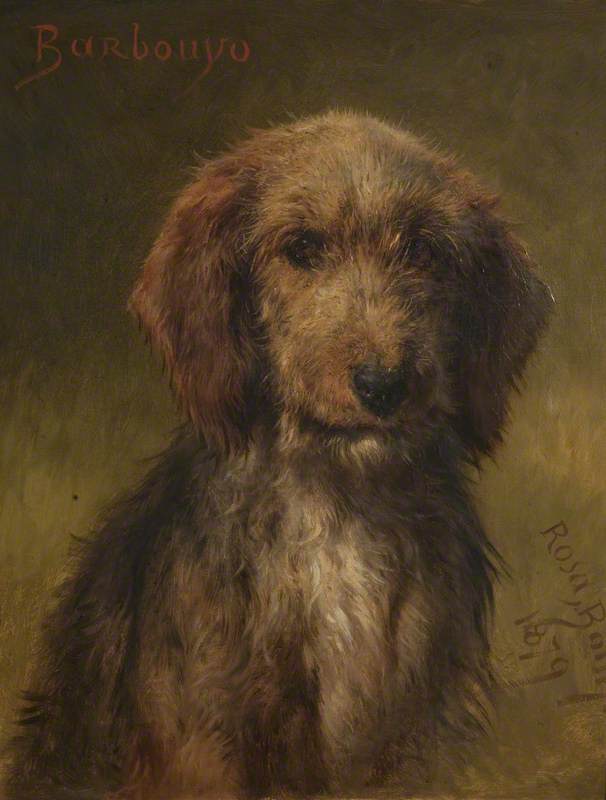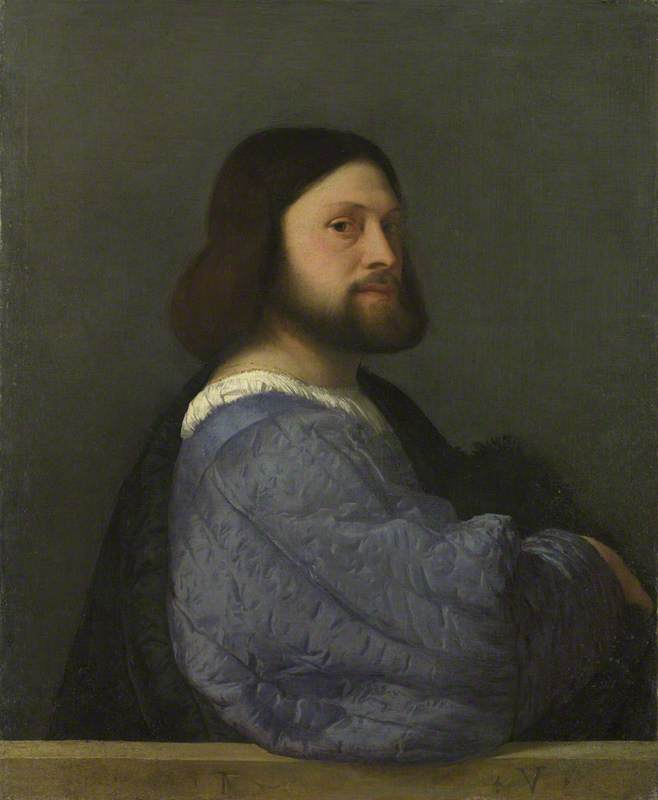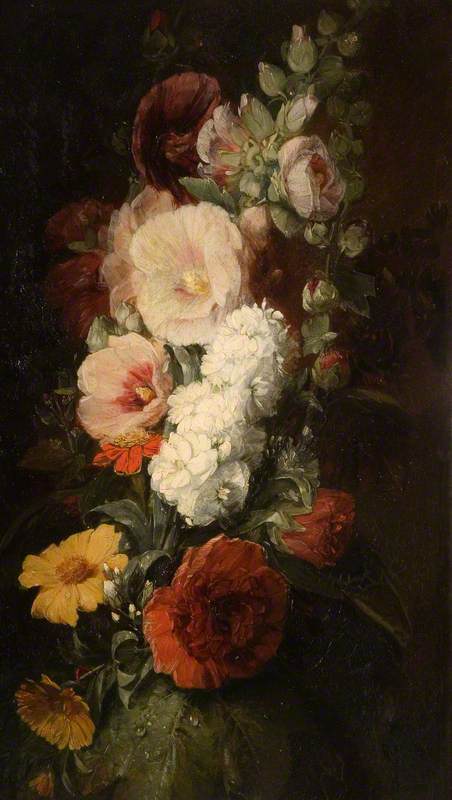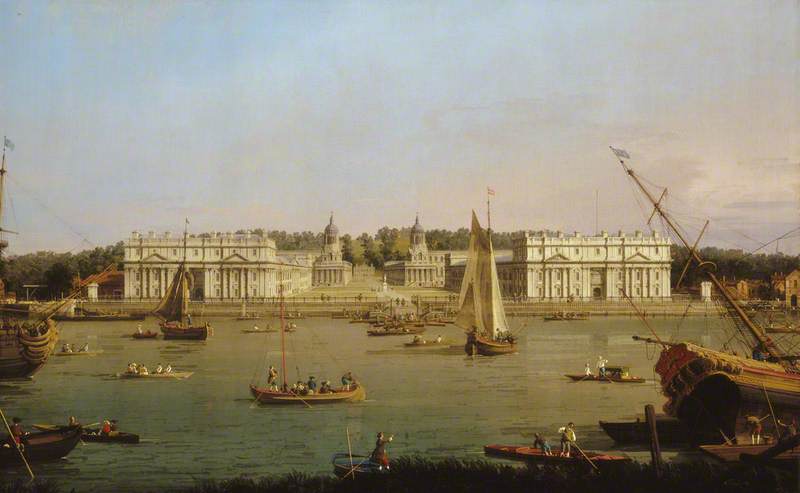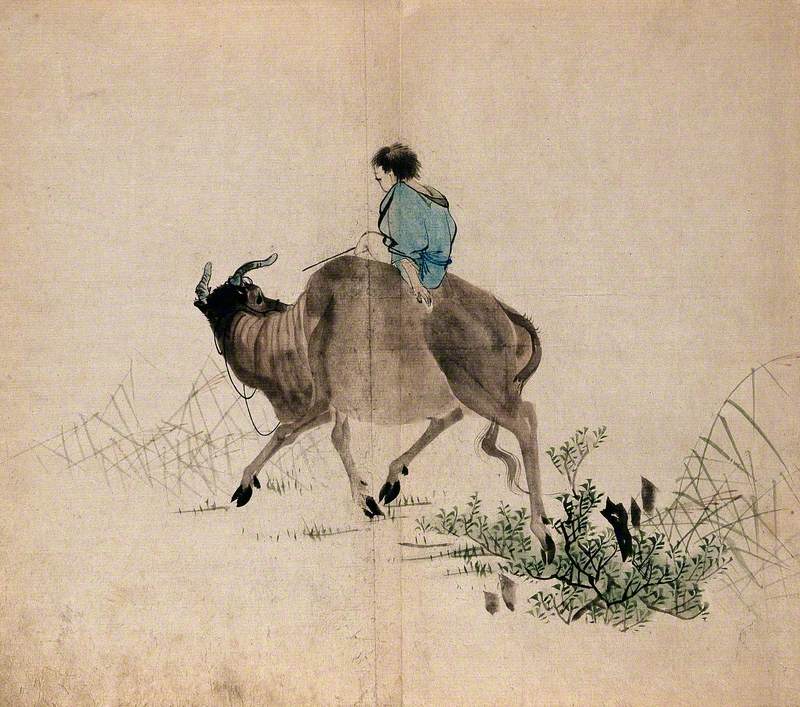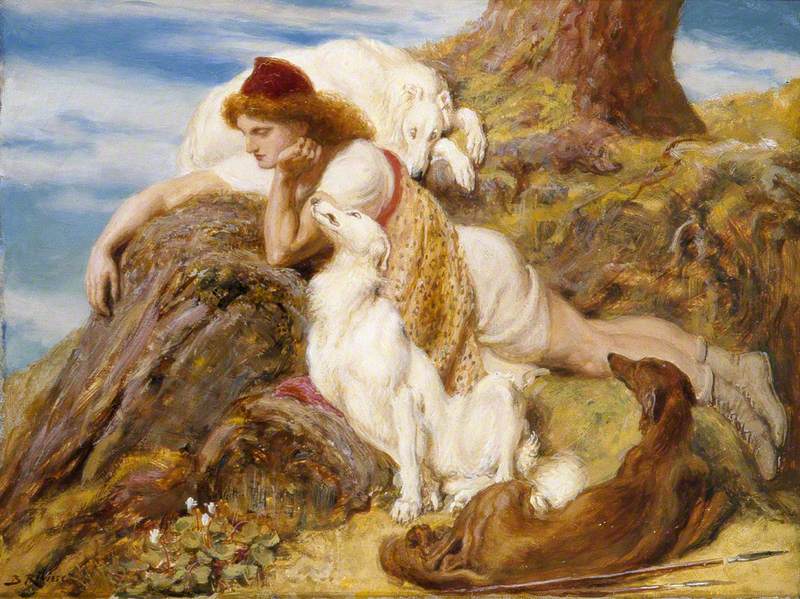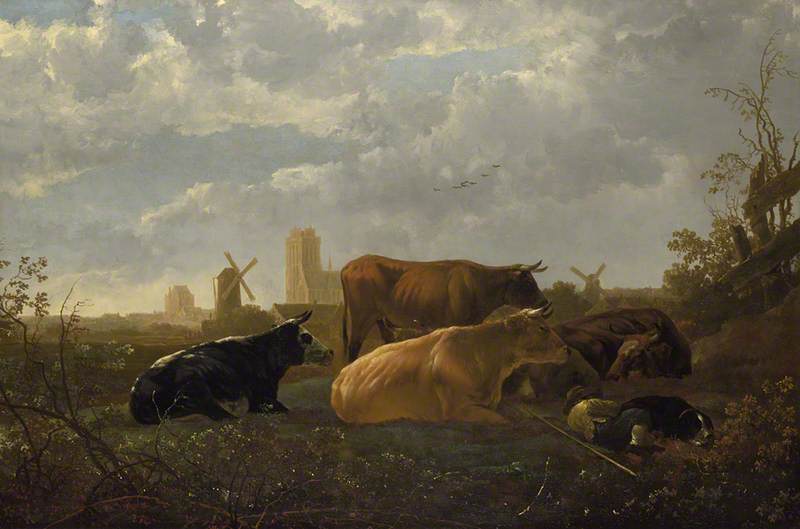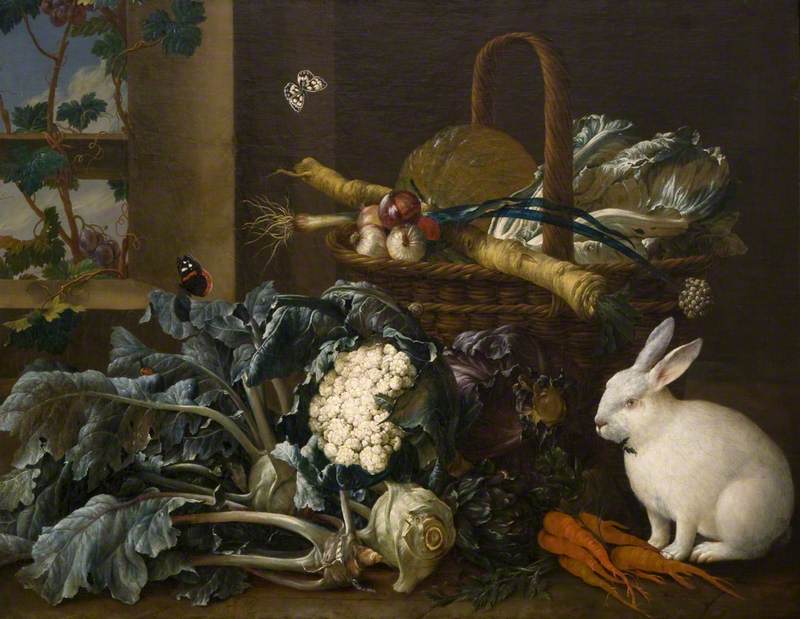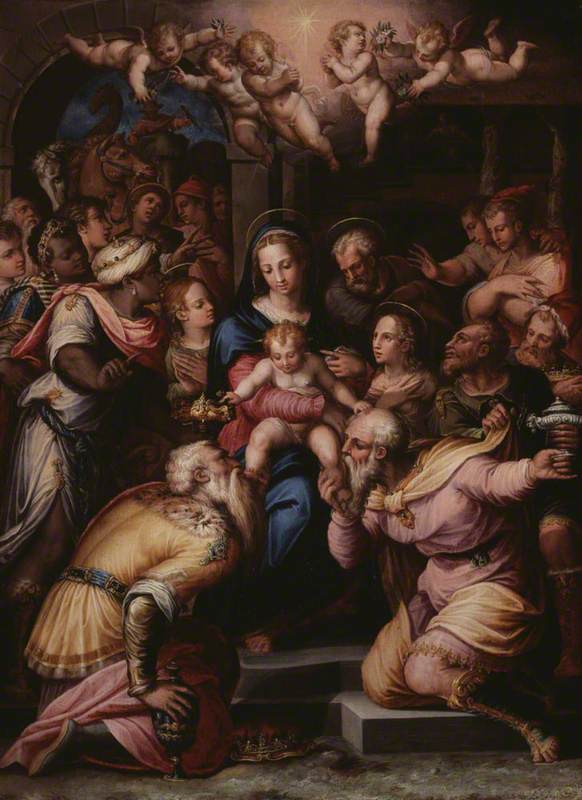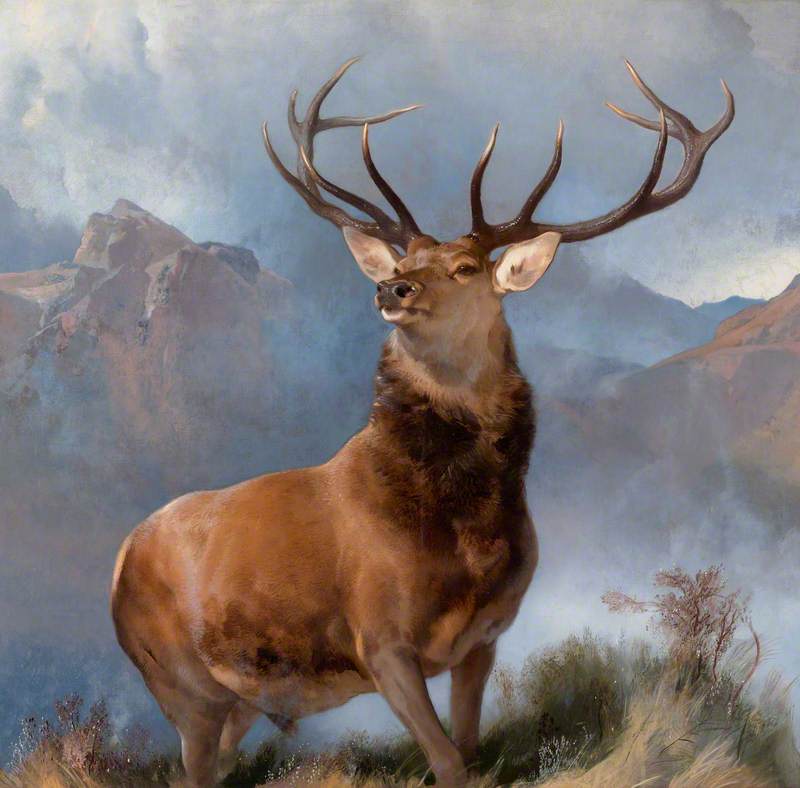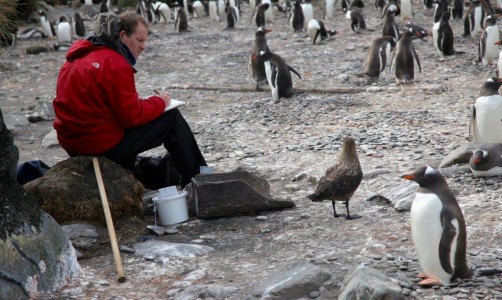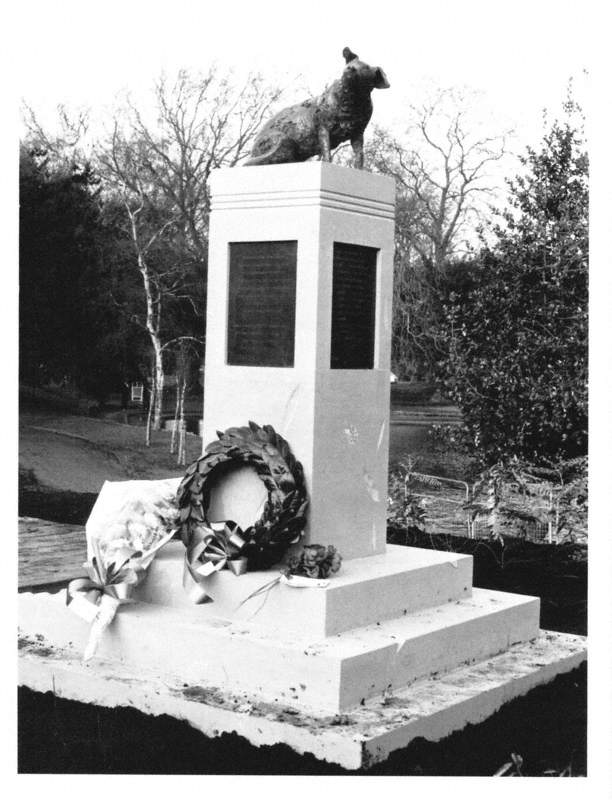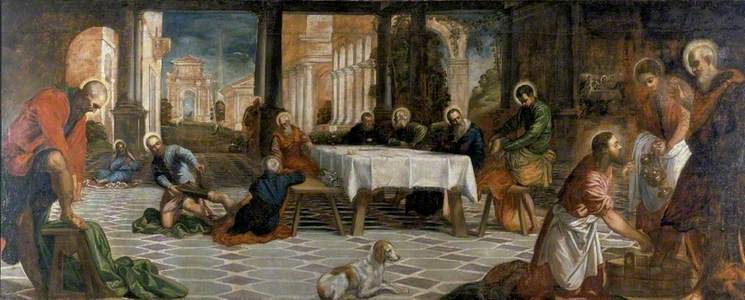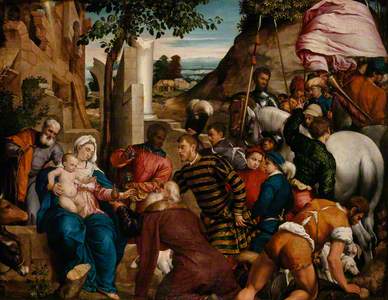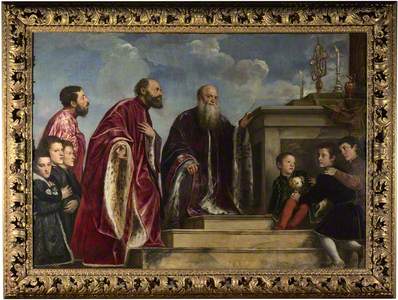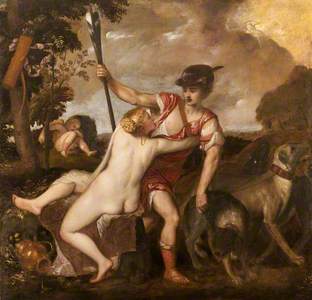Something interesting happened to painting in sixteenth-century Venice. Images of dogs became much more common. Perhaps for the first time, dogs even became the principal subject-matter, as in the 1548 Two Hunting Dogs Tied to a Tree Stump (Louvre) by Jacopo Bassano (d.1592).
View this post on Instagram
Essentially a double-portrait of two Italian pointers owned by philanthropist Antonio Zentani – his emblem was a dog tethered to a tree – this painting was so original that Tintoretto (c.1518–1594) precisely copied one of the dogs and placed it prominently in his huge painting Christ Washing the Disciples' Feet, a version of which is in the Shipley Art Gallery.
Christ Washing the Disciples' Feet
c.1547
Jacopo Tintoretto (c.1518–1594) (attributed to) 
In Renaissance Italy dogs were symbols of loyalty. Alciato's Emblemata (1531) says clearly: 'Dogs mean fidelity'. This symbolism is found in Ripa's Iconologia (1593): 'the dog is the most faithful animal in the world, and beloved by men.' They were also a sign of high social status.
Sixteenth-century Venice was becoming more aristocratic and less republican. Noble families wanted to display their wealth, which they did by building Palladian villas on the mainland, with large estates for hunting, and by breeding dogs. Italian aristocrats had often included dogs in their portraits, most memorably in Mantegna's Camera Picta (1465–1474), where the Marquis of Mantua's favourite dog 'Rubino' sits sedately under his chair.
#NationalPetMonth
— Sarah Cockram (@sarah_cockram) April 8, 2021
Renaissance Pet Of The Day: Gonzaga dog portraits 4/4:
The dog called Rubino!
Andrea Mantegna, Camera Picta / Camera degli Sposi, 1465-74, Palazzo Ducale, Mantua
#RenPets #RenAnimals #PetHistory pic.twitter.com/JXq0I9g7YH
Bassano was the preeminent canine painter in Venice, as shown by the four dogs in his The Adoration of the Kings (Scottish National Gallery).
The Adoration of the Kings
early 1540s
Jacopo Bassano the elder (c.1510–1592) 
Bassano's paintings of rustic scenes suited the tastes of this new generation of Venetian nobility. His close observation of animals and naturalistic style can be seen in The Good Samaritan of c.1562–1563 (National Gallery).
In the bottom right two dogs lap up oil and wine from a vessel which the Samaritan has used to heal the traveller's wounds. Attentively painted, each brushstroke reveals the texture of the dogs' coat and movement of their bodies. Subtle shifts in tone show how precisely the artist looked at his models and reproduced their colouring. Bassano even makes the dogs expressive, as one casts his eye to the dog on the right, who turns his head away. In their close companionship, these dogs echo the painting's story.
Dogs are very noticeable in the art of the greatest Venetian painter, Titian. They appear increasingly in his paintings from the 1530s, around the time he moved into a large house with a garden where he would live and work for the rest of his life. In the parish of San Canciano, the house was referred to as casa da statio, suggesting it was an upper-class home. Like his compatriots, Titian wanted to express his social standing, and among the many family and servants who lived in the property would have been several dogs.
The breed most associated with Titian's art is the Papillon (named after its butterfly-like ears), known also as a Titian spaniel. The diminutive size of this toy dog means it's perfectly adapted for images of children, and we find two endearing examples in UK collections. In the Royal Cornwall Museum is a copy of Titian's 1542 Portrait of Clarissa Strozzi (Staatliche Museen, Berlin).
The two-year-old Clarissa feeds her red and white dog a ring-shaped biscuit. She appears somewhat scared and leans into her companion who seems to guard her. They both glance to the left at something happening outside the painting. Titian emphasises their togetherness by their similar features: big eyes and button-noses.
Clarissa Strozzi (1540–1581) was the daughter of Roberto Strozzi and Maddalena dei Medici who were exiled in Venice between 1536 and 1542. As the child of two important Florentine families this is a political portrait, but although the dog and heavy pearl jewellery represents the family's status, the dog adds a note of infant fun.
The same is true in a painting of around the same time, Titian's magnificent group portrait The Vendramin Family (National Gallery). Nine male members of a Venetian patrician clan venerate a relic of the True Cross which was held at the Scuola di San Giovanni Evangelista.
While the older men and teenagers show due reverence, three younger boys struggle to control themselves. The youngest sits on a step and holds the same red and white spaniel. Both dog and boy, like Clarissa, turn to see what the fuss is about. Again, Titian takes a dull political picture and adds a funny, human element with the inclusion of a dog, but this actually reinforces the painting's message.
Underlining the connection between dogs, hunting and aristocracy are the mythological paintings (poesie) that Titian painted for the King of Spain, Philip II, in the 1550s. We have the two masterpieces from this series, Diana and Actaeon and Diana and Callisto, in UK national galleries.
The first tells the story of the hunter Actaeon who accidently stumbles upon the goddess Diana and her nymphs bathing. Both Acteon and Diana have companion dogs, and through their reactions Titian encapsulates the whole narrative. Acteon's hound looks inquisitively at his master, wondering why they have suddenly stopped. Diana's spaniel yaps violently at the intruders. Titian was a skilful storyteller, and this is a lesson in pictorial narrative.
Actaeon's punishment was to be transformed into a stag and hunted by his own hounds, a fate seen in The Death of Actaeon of 1559–1575 (National Gallery).
Quite different are the two dogs in Diana and Callisto, who seem tired after the hunt. Actaeon's dog reappears, wearing his red collar with gold studs, now the property of Diana.
We can appreciate how closely the artist observed real dogs by the way the hound slumps on the ground and hangs out his tongue.
Philip II was keen on hunting, and Titian took up this theme in his earlier poesie, Venus and Adonis (Prado, Madrid). This composition was extremely popular, and Titian's studio produced multiple versions, three of which are in UK collections: at Hatchlands Park, the Dulwich Picture Gallery and the National Gallery.
The way Titian chooses to tell the story, Venus begs her lover Adonis not to go hunting (where he will be killed by a boar), but the impetuous youth ignores her. He, like his dogs, is ready for action.
In all three versions we see the same dogs, each an individual portrait, all in the same poses. Every hound has caught the scent (the dog nearest seems to smell us), and they twist and pull at the leash. Again, Titian uses dogs to intensify the narrative.
Adonis Relinquishing Venus for the Hunt ('The Rokeby Venus and Adonis')
Titian (c.1488–1576) 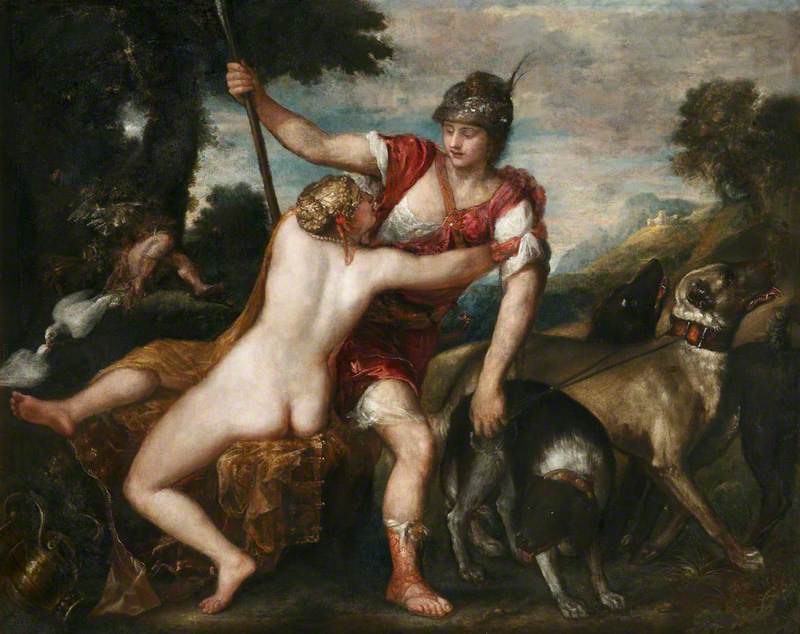
My favourite Venetian canine painter was Paolo Veronese (1528–1588). Veronese was the perfect artist for the new, more aristocratic nobility in Venice. His paintings reflected their lifestyle and were incredibly popular. While Bassano's dogs are naturalistic, Veronese's dogs have personality and character, adding humanity and humour to his paintings. For instance in the Scottish National Gallery's Venus, Cupid and Mars (c.1580), where a Titian-like spaniel scrambles over a terrified Cupid, playfully interrupting the lovers.
Funnily, Veronese's dogs often seem to act like us the viewer, as with the two greyhounds in the centre of the Louvre's enormous Wedding Feast at Cana (1563), seen here in a nineteenth-century copy by Henri Fantin-Latour in Ulster Museum.
The Wedding Feast at Cana
(after Paolo Veronese) 1867
Henri Fantin-Latour (1836–1904) 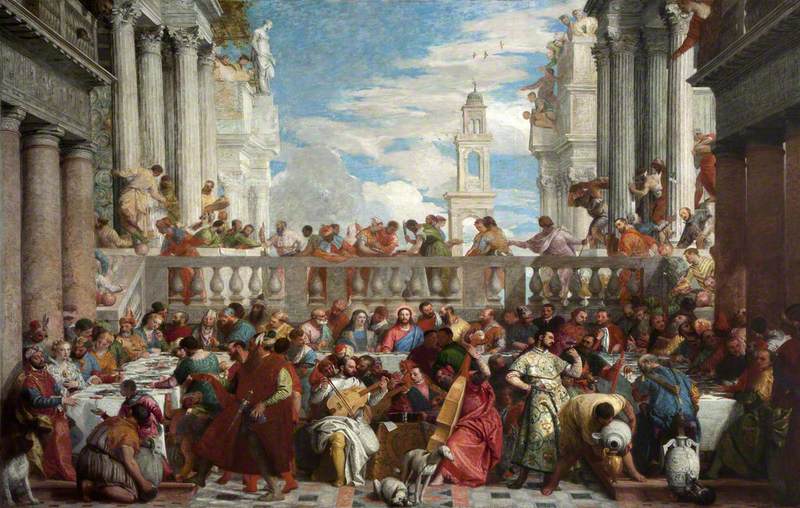
A close-up copy of these dogs can be seen in a painting in the collection at Kingston Lacy.
Tied together by the same leash, one dog lies on the ground and gnaws on a bone while the other stands up alert looking off to the right, pulling at his companion. In the original it's clear his attention has been caught by the miracle taking place, as astonished servants see that Christ has transformed water into wine (or maybe this is a joke, and the dog is actually transfixed by the cat pawing at the wine jug). We, the viewers, are like these dogs: half of us is consumed by the lavish feast, half focuses on the divine event.
On the left of Veronese's The Family of Darius before Alexander (National Gallery) can be seen two dwarf spaniels. Again, each dog displays a different attitude. One writhes and snarls and is restrained by a court jester, a dwarf like the spaniel itself. The other sits calmly in the arms of a women, staring comically out of the canvas – the only character in this multi-figured canvas to make eye-contact with the viewer.
The Family of Darius before Alexander
1565-7
Paolo Veronese (1528–1588) 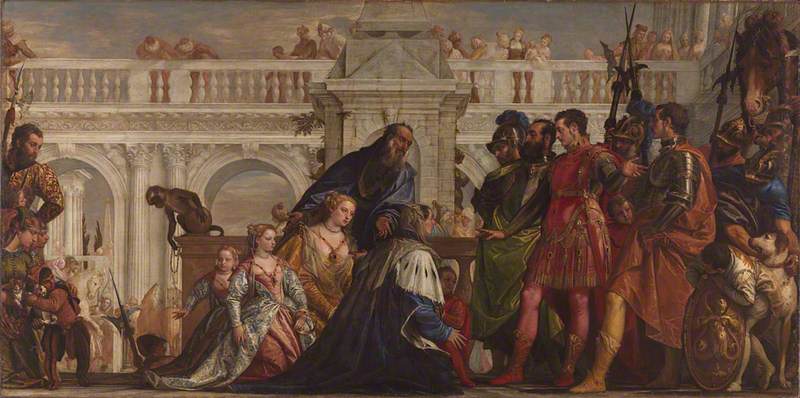
The Family of Darius tells a complicated story of mistaken identity. It's an extremely long canvas (475 cm), and Veronese frames the picture with dogs at either end. On the right is another hound trying to walk away. He is also being restrained, this time by a solider. The dog adopts a contrapposto pose, with his body turned in one direction and his head the other. Like the boy next to him, he tries to look at the main scene and, like us, both look slightly perplexed.
We find another quizzical-looking dog in Veronese's Happy Union (about 1575), the final painting in the series Allegories of Love (National Gallery).
Again the artist uses a dog to make an art-historical joke. Firstly in his expression, as he attempts to understand the symbolism. Secondly, in the way he leans back and cranes his neck. This is the same body position we would have adopted. From the strange perspective (sotto in su or 'seen from below') we know the painting would have decorated a ceiling and been difficult to view – this dog has the same problem.
All these dogs are a testament to the naturalism of Venetian painting, and show how these artists understood the expressive possibilities of nature. They evidence a changing society, the new popularity of dogs mirroring an increasingly aristocratic Venice. Finally, they anticipate a new genre, as true animal painting emerged in the seventeenth century.
Luke Uglow, art historian and lecturer at the University of York
